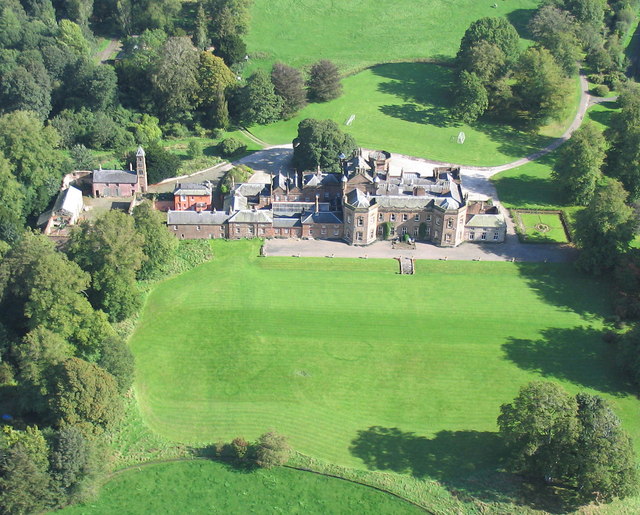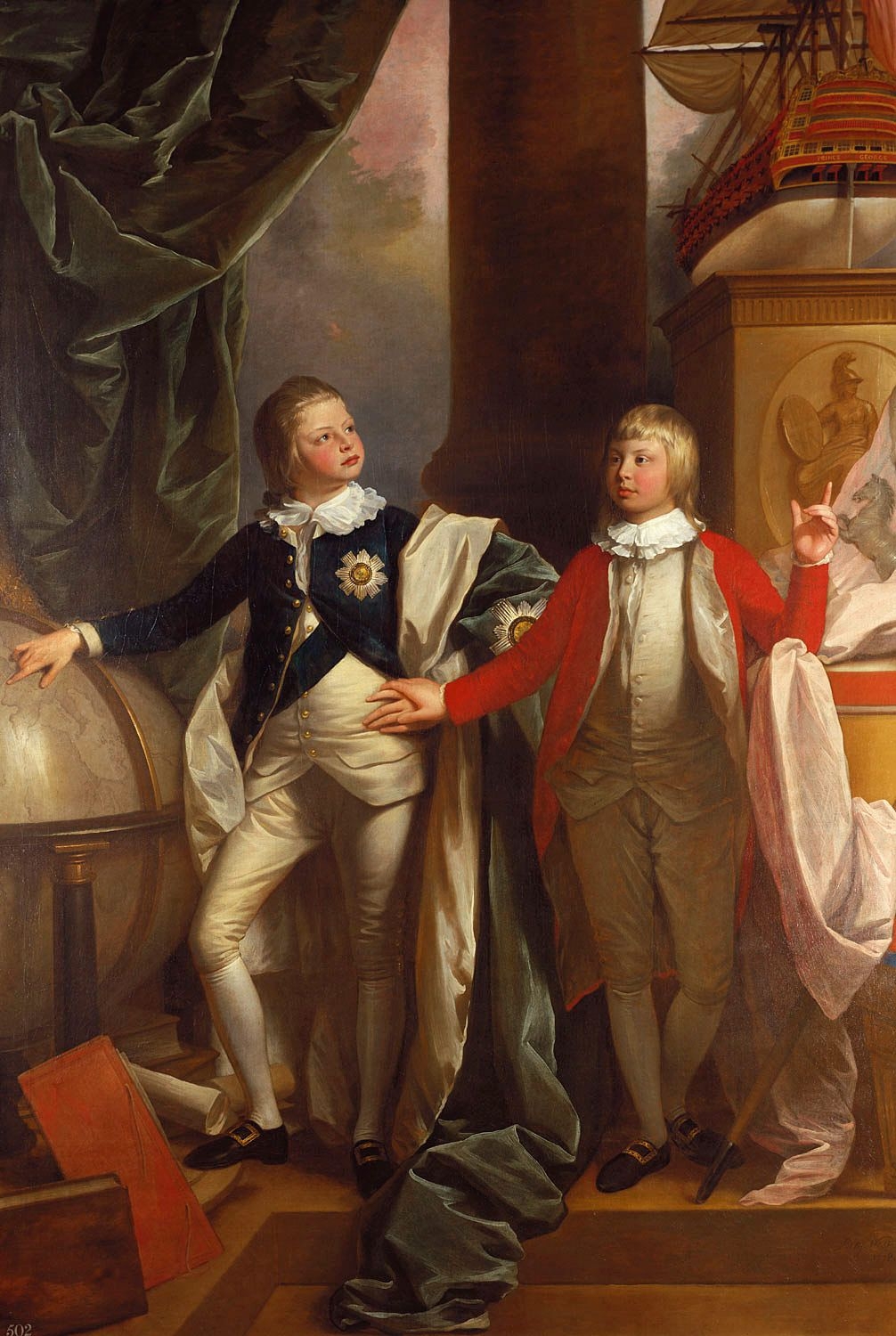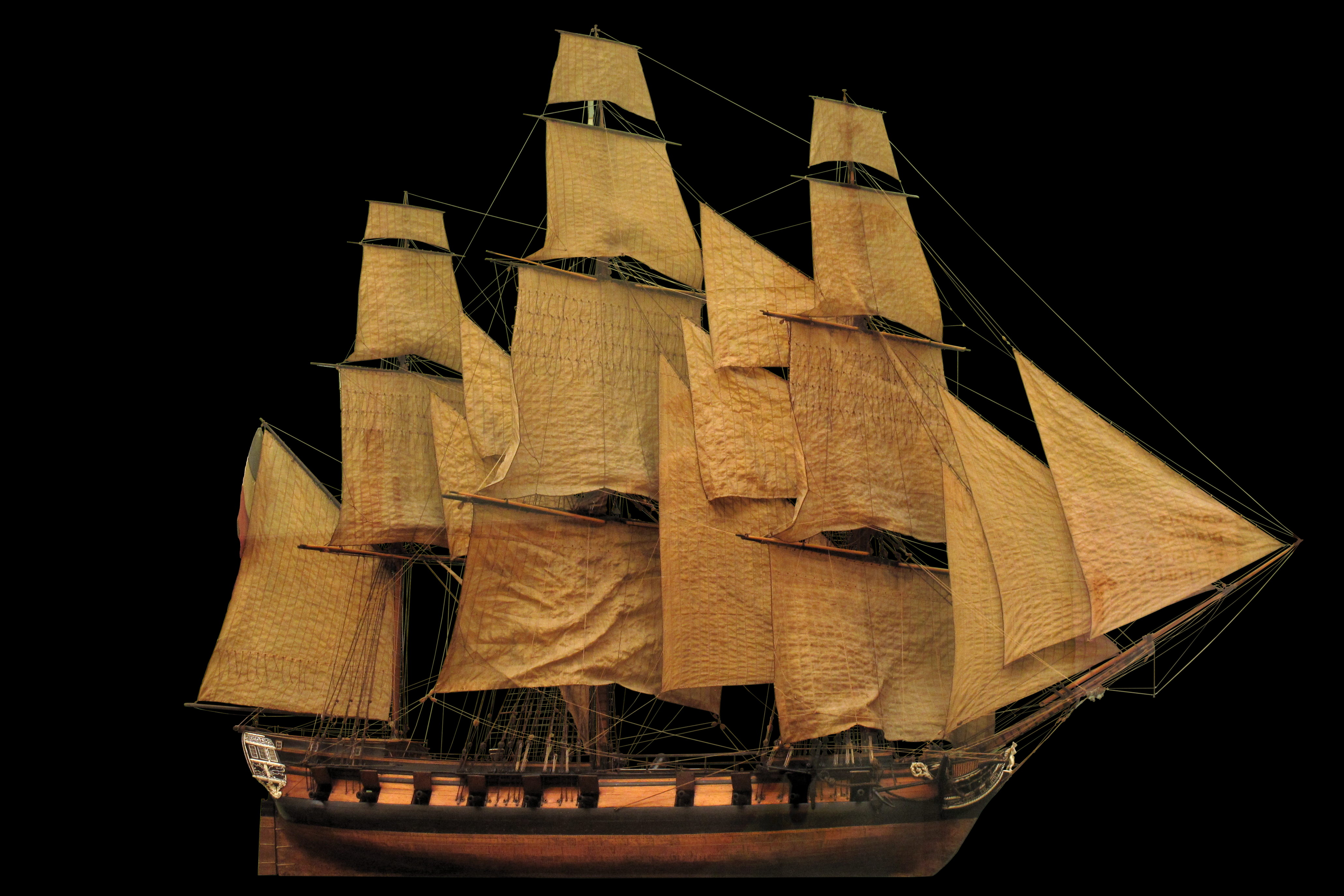|
William Symonds
Sir William Symonds CB FRS (24 September 1782 – 30 March 1856, aboard the French steamship ''Nil'', Strait of Bonifacio, Sardinia)Complete List of Royal Society Fellows 1660-2007 page 345. was Surveyor of the Navy in the from 9 June 1832 to October 1847, and took part in the naval reforms instituted by the Whig First Lord of the Admiralty Sir James Robert George Graham in 1832. Lif ...
|
Henry Wyndham Phillips
Henry Wyndham Phillips ( 1820 – 8 December 1868) was a British artist and portrait painter. Although he produced and exhibited a small number of paintings of scriptural subjects early on in his career, he spent most of his life working as a portrait artist. He was born in London, the younger son of the portraitist Thomas Phillips, from whom he received most of his art tuition. When his father died in 1845, he bequeathed Henry all of his painting materials and the use of his painting rooms at 8 George Street, Hanover Square, Westminster, Hanover Square in central London, where Henry is believed to have lived for the rest of his life. He was a very popular and sought-after portrait artist. His commissions included the portraits of actor Charles Kean (as Louis XI) for the Garrick Club, Dr William Prout for the Royal College of Physicians, and Robert Stephenson for the Institution of Civil Engineers. Some of his works, including his portrait of the famous archaeologist, Austen ... [...More Info...] [...Related Items...] OR: [Wikipedia] [Google] [Baidu] |
James Robert George Graham
Sir James Robert George Graham, 2nd Baronet (1 June 1792 – 25 October 1861) was a British statesman, who notably served as Home Secretary and First Lord of the Admiralty. He was the eldest son of Sir James Graham, 1st Baronet, by Lady Catherine, eldest daughter of the 7th Earl of Galloway. In 1819, he married Fanny Callander, youngest daughter of Sir James Campbell of Craigforth and Ardkinglas Castle. Sir James was created Doctor of Laws at the University of Cambridge in 1835, was Lord Rector of the University of Glasgow, 1840. He was First Lord of the Admiralty from 1830 to 1834 when he resigned on account of the government pressing for a reform of the Irish Church. He became Secretary of the Home Department from September 1841 to July 1846 and again First Lord of the Admiralty from December 1852 until February 1855. He was a member of the Council of the Duchy of Lancaster, and Deputy Lieutenant for county of Hertfordshire. He represented Kingston upon Hull from 181 ... [...More Info...] [...Related Items...] OR: [Wikipedia] [Google] [Baidu] |
William IV
William IV (William Henry; 21 August 1765 – 20 June 1837) was King of the United Kingdom of Great Britain and Ireland and King of Hanover from 26 June 1830 until his death in 1837. The third son of George III, William succeeded his elder brother George IV, becoming the last king and penultimate monarch of Britain's House of Hanover. William served in the Royal Navy in his youth, spending time in British North America and the Caribbean, and was later nicknamed the "Sailor King". In 1789, he was created Duke of Clarence and St Andrews. Between 1791 and 1811, he cohabited with the actress Dorothea Jordan, with whom he had ten children. In 1818, he married Princess Adelaide of Saxe-Meiningen; William was not known to have had mistresses during their marriage. In 1827, he was appointed Britain's Lord High Admiral of the United Kingdom, Lord High Admiral, the first since 1709. As his two elder brothers died without leaving Legitimacy (family law), legitimate issue ... [...More Info...] [...Related Items...] OR: [Wikipedia] [Google] [Baidu] |
George Canning
George Canning (; 11 April 17708 August 1827) was a British Tory statesman. He held various senior cabinet positions under numerous prime ministers, including two important terms as foreign secretary, finally becoming Prime Minister of the United Kingdom for the last 119 days of his life, from April to August 1827. The son of an actress and a failed businessman and lawyer, Canning was supported financially by his uncle, Stratford Canning, which allowed him to attend Eton College and Christ Church, Oxford. Canning entered politics in 1793 and rose rapidly. He was Paymaster of the Forces (1800–1801) and Treasurer of the Navy (1804–1806) under William Pitt the Younger. Canning was foreign secretary (1807–1809) under the Duke of Portland. Canning was the dominant figure in the cabinet and directed the Battle of Copenhagen, the seizure of the Danish fleet in 1807 to assure Britain's naval supremacy over Napoleon. In 1809, he was wounded in a duel with his rival Lord Cas ... [...More Info...] [...Related Items...] OR: [Wikipedia] [Google] [Baidu] |
Brig
A brig is a type of sailing vessel defined by its rig: two masts which are both square rig, square-rigged. Brigs originated in the second half of the 18th century and were a common type of smaller merchant vessel or warship from then until the latter part of the 19th century. In commercial use, they were gradually replaced by Fore-and-aft rig, fore-and-aft rigged vessels such as Schooner, schooners, as owners sought to reduce crew costs by having rigs that could be handled by fewer men. In Royal Navy use, brigs were retained for training use when the battle fleets consisted almost entirely of iron-hulled steamships. Brigs were prominent in the coastal coal trade of British waters. 4,395 voyages to London with coal were recorded in 1795. With an average of eight or nine trips per year for one vessel, that is a fleet of over 500 Collier (ship), colliers trading to London alone. Other ports and coastal communities were also served by colliers trading to Britain's coal ports. In the ... [...More Info...] [...Related Items...] OR: [Wikipedia] [Google] [Baidu] |
HMS Pantaloon
Two ships of the Royal Navy have borne the name HMS ''Pantaloon'': * was a unique 10-gun brig built at Troon as the Duke of Portland's yacht in 1831, and purchased later that year, keeping her civilian name; following dhow chasing to suppress the East African slave trade The Indian Ocean slave trade, sometimes known as the East African slave trade, involved the capture and transportation of predominately slavery in Africa, sub-Saharan African slaves along the coasts, such as the Swahili Coast and the Horn of Afri ..., broken up in 1852. * was an 11-gun wooden screw sloop launched in 1860 at Devonport Dockyard and sold in 1867. References {{DEFAULTSORT:Pantaloon, Hms Royal Navy ship names ... [...More Info...] [...Related Items...] OR: [Wikipedia] [Google] [Baidu] |
William Bentinck, 4th Duke Of Portland
William Henry Cavendish-Scott-Bentinck, 4th Duke of Portland, (24 June 1768 – 27 March 1854), styled Marquess of Titchfield until 1809, was a British politician who served in various positions in the governments of George Canning and Lord Goderich. Background and education Portland was the eldest son of Prime Minister William Cavendish-Bentinck, 3rd Duke of Portland and Lady Dorothy, daughter of William Cavendish, 4th Duke of Devonshire and Charlotte Boyle, Baroness Clifford. He was the elder brother of Lord William Bentinck and Lord Charles Bentinck. He was educated first in Ealing under the tutelage of Samuel Goodenough graduating in 1774, followed by Westminster School (1783). He attended Christ Church, Oxford for two years but did not take a degree. The third Duke, who spared no expense for his heir, sent him to The Hague in 1786 for experience working with the crown's envoy, Sir James Harris. He returned in 1789. He later received an honorary degree of Doctor of ... [...More Info...] [...Related Items...] OR: [Wikipedia] [Google] [Baidu] |
Commander (Royal Navy)
Commander (Cdr) is a senior officer rank of the Royal Navy of the United Kingdom. It is immediately junior to captain and immediately senior to the rank of lieutenant commander. Officers holding the junior rank of lieutenant commander are not considered to be commanders. History The title (originally 'master and commander') originated in around 1670 to describe Royal Navy officers who captained ships too large to be commanded by a lieutenant, but too small to warrant the assignment of a post-captain, or before 1770 a master who was in charge of a ship's navigation. These ships were usually sloops-of-war, bomb vessels, fireships, hospital ships and storeships. The commanding officer of this type of ship was responsible for both sailing and fighting the ship and was thus its 'master and commander'. Before 1750, the rank was broadly considered as the limit of advancement for those without patronage, especially those who had been promoted from among a ship's crew. By contr ... [...More Info...] [...Related Items...] OR: [Wikipedia] [Google] [Baidu] |
Corvette
A corvette is a small warship. It is traditionally the smallest class of vessel considered to be a proper (or " rated") warship. The warship class above the corvette is that of the frigate, while the class below was historically that of the sloop-of-war. The modern roles that a corvette fulfills include coastal patrol craft, missile boat and fast attack craft. These corvettes are typically between 500 and 2,000 tons. Recent designs of corvettes may approach 3,000 tons and include a hangar to accommodate a helicopter, having size and capabilities that overlap with smaller frigates. However unlike contemporary frigates, a modern corvette does not have sufficient endurance or seaworthiness for long voyages. The word "corvette" is first found in Middle French, a diminutive of the Dutch word ''corf'', meaning a "basket", from the Latin ''corbis''. The rank " corvette captain", equivalent in many navies to " lieutenant commander", derives from the name of this type of ship. The ... [...More Info...] [...Related Items...] OR: [Wikipedia] [Google] [Baidu] |
George Vernon (yachtsman)
George Vernon may refer to: * George Vernon (cricketer) (1856–1902), English cricketer * George Vernon (MP for Derby and Derbyshire) (c. 1503–1565), member of parliament (MP) for Derby and Derbyshire * George Vernon (MP for Bridgnorth) (1575–1639), MP for Bridgnorth * George Vernon (MP, died 1692) (c. 1630–1692), MP for Haslemere * George Vernon (Derby MP) (1635–1702), MP for Derby * George Vernon (MP, died 1735) (1661–1735), MP for Haslemere * George Vernon, member of the King's Men personnel King's Men personnel were the people who worked with and for the Lord Chamberlain's Men and the King's Men (for all practical purposes a single continuous theatrical enterprise) from 1594 to 1642 (and after). The company was the major theatrical ... 1617–30 See also * George Venables-Vernon (other) * {{hndis, Vernon, George ... [...More Info...] [...Related Items...] OR: [Wikipedia] [Google] [Baidu] |
William Cornwallis
Admiral Sir William Cornwallis, (20 February 17445 July 1819) was a Royal Navy officer. He was the brother of Charles Cornwallis, 1st Marquess Cornwallis, British commander at the siege of Yorktown. Cornwallis took part in a number of decisive battles including the siege of Louisbourg in 1758, when he was 14, and the Battle of the Saintes but is best known as a friend of Lord Nelson and as the commander-in-chief of the Channel Fleet during the Napoleonic Wars. He is depicted in the Horatio Hornblower novel, ''Hornblower and the Hotspur''. His affectionate contemporary nickname from "the ranks" was Billy Blue, and a sea shanty was written during his period of service, reflecting the admiration his men had for him. Early life William Cornwallis was born 20 February 1744. His father was Charles, the fifth baron and first earl Cornwallis, and his mother was Elizabeth, daughter of Charles Townshend, 2nd Viscount Townshend. William was the younger brother of General Charles Cornw ... [...More Info...] [...Related Items...] OR: [Wikipedia] [Google] [Baidu] |
Malta
Malta, officially the Republic of Malta, is an island country in Southern Europe located in the Mediterranean Sea, between Sicily and North Africa. It consists of an archipelago south of Italy, east of Tunisia, and north of Libya. The two official languages are Maltese language, Maltese and English language, English. The country's capital is Valletta, which is the smallest capital city in the EU by both area and population. It was also the first World Heritage Site, World Heritage City in Europe to become a European Capital of Culture in 2018. With a population of about 542,000 over an area of , Malta is the world's List of countries and dependencies by area, tenth-smallest country by area and the List of countries and dependencies by population density, ninth-most densely populated. Various sources consider the country to consist of a single urban region, for which it is often described as a city-state. Malta has been inhabited since at least 6500 BC, during the Mesolith ... [...More Info...] [...Related Items...] OR: [Wikipedia] [Google] [Baidu] |






